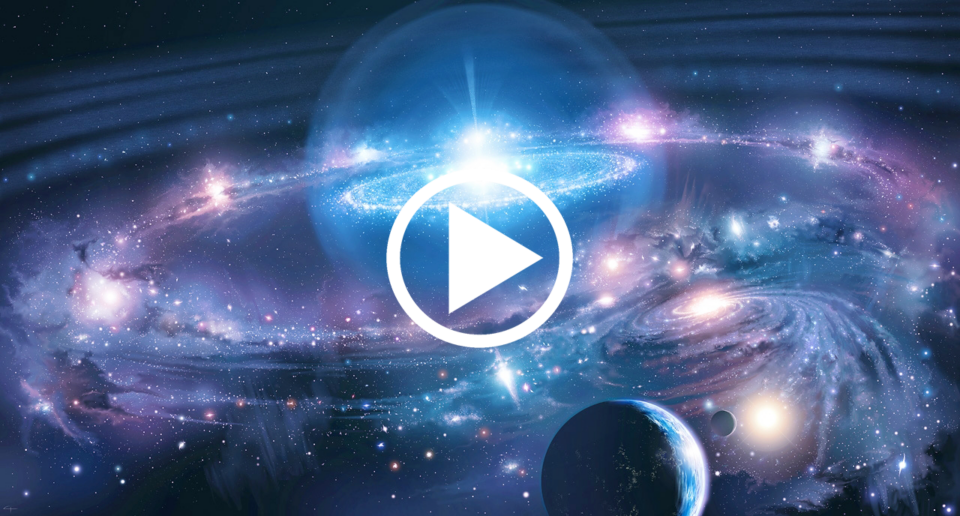The apocalyptic perspective of the universe is a hot topic in physics. Researchers have predicted many possibilities, the most important of which are the three theories of hot death, the great shrinkage, and the great tear.
How will the universe end? “Not with an explosion but with a moan,” said American poet T.S. Eliot, writing on the end of the world. To get a more precise answer, physicists have spent a lot of time studying this problem and coming up with reliable hypotheses.
“In space textbooks and classrooms, we are taught that there are three scenarios for the future of the universe,” explains Robert Caldwell, a cosmologist at Dartmouth College in Hanover, New Hampshire (United States). According to the first scenario, the universe would continue to expand indefinitely. All matter eventually decays into energy in an outcome known as Heat Death. For the second scenario, gravity could cause the universe to contract and collapse, creating an inverted Big Bang called the Big Crunch. In the third scenario, dark energy will cause the expansion of the universe to accelerate and then end in the form of a Big Rip.
Before we dive into the apocalyptic perspective of the universe, let’s take a look at its birth. In 1929, Edwin Hubble was studying distant galaxies when he noticed an interesting effect. The light they emit has a redshift in the electromagnetic spectrum. Hubble argues that this can only happen if the light traveling through space is expanding and the galaxies are all moving away from us in all directions. This discovery led to the Big Bang Theory.
Scientists believe that time and space began with the Big Bang. This is the moment when matter at a singularity of density, of extreme heat, explodes and expands outward. When things cool to a certain extent, particles start to form larger structures like galaxies, stars, and all life on Earth.
Currently, the universe is about 13 billion years old. Given the different scenarios for the end of the universe, we are not sure how long this will last.
In the Heat Death scenario, all the stars in the universe would burn off their fuel and most of them would turn into white dwarfs or dense neutron stars through supernova explosions. During this time, the most massive stars will collapse into black holes. While black holes aren’t as “hungry” as they are often described, with enough time, a black hole’s massive gravity could suck most of the matter inside.
“After that, a strange scene occurs,” Caldwell said.
Black holes emit a special type of radiation called Hawking radiation. The king of physics Stephen Hawking was the first to propose this hypothesis. Hawking’s radiation causes the black hole to lose mass and slowly evaporate. After 10,100 years, all black holes eventually disappear, leaving only energy, according to Kevin Pimbblet, an astrophysicist at the University of Hull, UK.
On the contrary, if the Big Crash scenario occurs, the gravity of stars and galaxies will one day begin to bring the entire universe together. Clusters of galaxies collide and merge, and then stars and planets merge as well. Finally, everything in the universe is concentrated in a point of extremely dense, high temperature matter – similar to the start of the Big Bang.
“The universe that ended in the Big Crunch was pretty neat and clean. It’s like when you go camping, when you let it clean up and leave nothing behind,” Caldwell said.
The third possibility for the end of the universe is the Great Rift. In this scenario, dark energy [which has the opposite effect of gravity] pulls everything apart. The expansion of the universe accelerated until distant galaxies were moving away from us so rapidly that their light was no longer visible. The nearest objects gradually disappeared behind what Caldwell described as a wall of darkness.
“Galaxies and star systems are starting to tear apart. Then came the planets, the atoms and eventually the entire universe, ”Caldwell said.
Because the properties of dark energy are still poorly understood, we don’t know which of the above three scenarios will prevail. Modern scientists suggest that dark energy may be the result of invisible residual dimensions predicted by string theory. In 2004, a team from the University of Washington proposed that dark energy is primarily caused by neutrinos interacting with hypothetical particles called “accelerate.” Many people even argue that there is no dark energy in nature, and general relativity may not be an accurate description of gravity.
Caldwell hopes that future observatories such as the US Space Agency’s Wide Field Infrared Telescope (WFIRST) or the LSST telescope will help shed light on the behavior of dark energy, which will help us better predict the end. of the universe.
Scientists also come up with a number of other less popular theories related to the doomsday prospect of the universe. According to the laws of physics, it’s possible that the Higgs boson – the particle that gives mass to other elementary particles by interacting with them – could one day destroy everything.
When it was discovered in 2012, researchers determined that the Higgs boson was about 126 times as massive as the proton. But theoretically this mass could change. If the Higgs boson were to become lighter, the vacuum in the universe would have a lower energy level.
The change in properties of the Higgs particle also affects everything in the universe. For example, electrons cannot orbit the nucleus, making the atom nonexistent. The photon changes from a mass without mass to a mass, which means that the sunlight hitting the Earth looks like a raindrop. We do not know if any living things on Earth survived this change.
“I classify this as an environmental catastrophe in particle physics. It doesn’t directly cause the death of the universe, it just makes the universe difficult to live with, ”Caldwell said.


